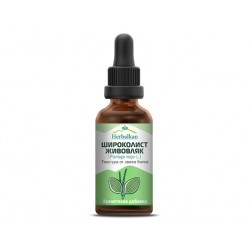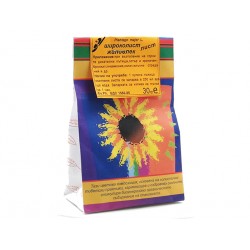There are over 250 species of plantain (Plantago lanceolata L.), growing mainly in temperate regions. About 15 species are common in Bulgaria, of which the Ribwort plantain and the Broadleaf plantain are the most commonly found and used.
The healing and nutritional properties of the plantain are known and used by the ancient peoples of Europe and Asia. Ancient philosophers and scientists Pliny the Elder (AD 23–79) and his nephew Pliny the Younger (AD 61–113) recommended placing a plantain leaf in the cauldron where meat was boiled. The broth prepared in this way acts as a panacea and can cure a person from all kinds of diseases. In Ancient China, plantain was an expensive medicinal and food product. In Bulgaria, plantain is widely used in folk medicine, says Prof. Pencho Dalev.
Ribwort plantain and Broadleaf plantain have similar healing properties. Folk medicine uses them as an antimicrobial, antiviral, and laxative agent: for inflammation of the upper respiratory tract, pharyngitis, laryngitis, acute and chronic bronchitis, pneumonia, inflammation of the bladder, varicose veins, stomach and duodenal ulcer, colitis, diseases of the bile ducts, cystitis with hematuria, for the treatment of wounds and skin diseases, enlarged prostate, heart failure, etc.
A decoction of leaves and crushed fresh leaves are applied externally as a compress to relieve and soften swelling from injuries, pain from boils, insect bites, and inflammation of the eyes. Fresh leaves help to treat fungal diseases between the toes and hands and in the groin. The plant's juice kills pathogenic microbes, cleans the wounds from purulent secretions, and promotes their rapid healing.
Plantain leaves contain proteins, carbohydrates, vitamins C, A, and K, citric acid, silicic acid, phytoncides, saponins, glycosides, and tannins. The content of dietary fibers (fibers) is high, which increases its nutritional qualities.
The young and tender leaves of the plantain are used to make salads with potatoes, onions, nettles, and horseradish. It enriches the taste, aroma, and nutritional value of soups, porridges, purees, omelets, sandwiches, and various vegetable and meat dishes.
Plantain salad with onions
120 g of plantain leaves and 50 g of young nettle leaves are poured with boiling water for 4-5 minutes, then the water is drained, the leaf mass is finely chopped and mixed well with one medium-sized onion, finely chopped and 50 g (2-3 tbsp) grated horseradish. Salt, add vinegar to taste, and mix well again. The salad is flavored with cream or vegetable fat.
Dry seasoning for plantain soups
The leaves are washed with cold water, dried with a dry cloth, and dried at room temperature, spread out on a clean surface. They are dried in a low oven at 600C for 2-3 hours and ground in a coffee grinder. The spice is stored in a well-closed container. It is used as a seasoning for soups, vegetable, and meat dishes.
Plantain leaf porridge
It is prepared in the same way as nettle leaf porridge.









